
Unfortunately, when someone mentions that Mas de Daumas Gassac is going to be 50 in 2022, it reminds me that I – too – am going to turn 50 that same year!
I was born the same year that Aimé & Véronique Guibert purchased the Mas Daumas – a rundown farm, almost abandoned by the Daumas Family. While I was born in the nearby city of Montpellier, I settled at Mas Daumas just a few months old and took my first step on the ground that would become within the decade a world-renowned terroir.
From a pure child of Mas de Daumas Gassac, there is of course a sense of pride, recognition for the path walked so far, and hope for the one to come.
There is no doubt that our parents had an extraordinary vision, as well as an amazing amount of energy. With both combined, they succeeded in doing something that very few people have achieved over the past century. As the second generation, we have inherited a task, the mission to polish this extraordinary jewel and keep it at the forefront of the singular estates of the world.
How has the Gassac team been coping with the extraordinary events of the last 14 months? Life goes on in the vineyard, but what have been the main differences?
I don’t think anyone has gone through the past year unaffected. What we are going through is something unique in our lives, and we have all learned how to cope with it in different ways.
At Mas de Daumas Gassac, our first goal has been to adapt to the situation, while making sure that everyone operated in the safest possible conditions…. From a work perspective the vineyard team and production teams have continued their work on site, wearing masks, carrying hydroalcoholic gel and working separately instead of in pairs as usual.
The rest of the team has adapted working from home, either totally or partially. Everyone had to be equipped with portable computer, audio headphones and has had to learn how to use Zoom!!!!
Overall, the biggest change has been the fact that as a team who used to share a lot together, we have had to work remotely, separately and still communicate, still smile and make jokes, and remind each other that we were a team, even if no longer side by side.
So, I would say the big difference is the fact that we have had to adapt and learn to work away from each other as a team, but also away from our partners, clients, suppliers….
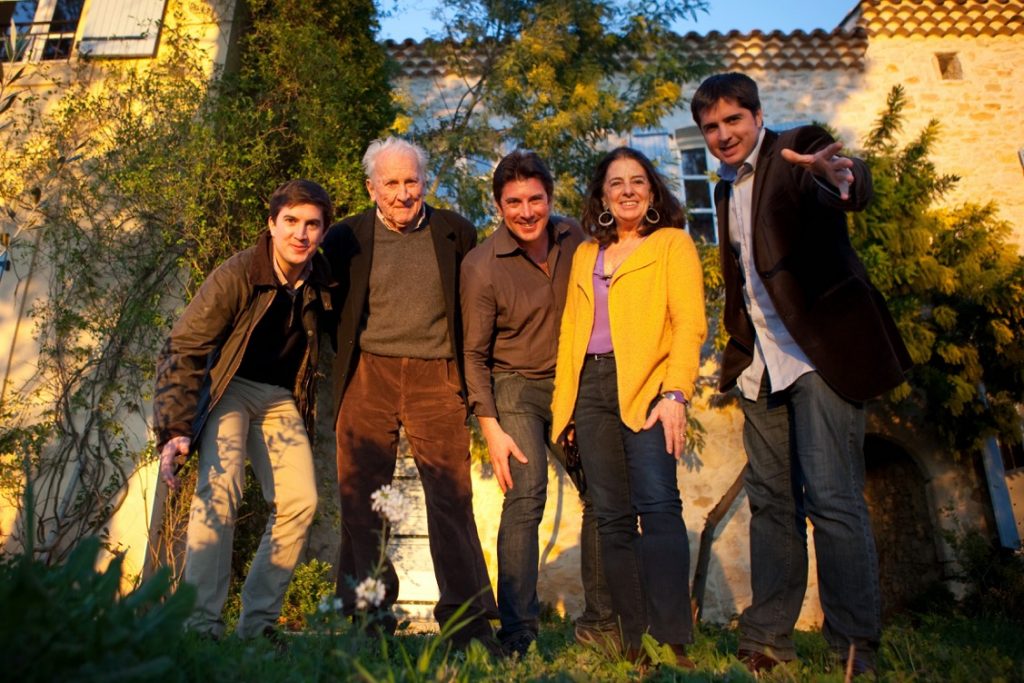
Can you give us a potted history of how your family came to the Gassac Valley in the early 1970s? (Tell us a bit about Aimé & Veronique). What was the farm before your family bought it?
Véronique Guibert de La Vaissière (my mother) was born in Montpellier (about 25km from Mas de Daumas Gassac) and was teaching there when my father – an aveyronnais who was running a 12th generation leather company in Millau – and her – started looking for a house in the countryside between the two cities in order to start a family.
They spent about two years looking for an old mas to renovate in the vicinity of (historic) St Guilhem-le-Désert. One day, when talking to the bar owner in Aniane, he mentioned having heard of a family that wanted to sell their farm on the outskirt of the village. My parents quickly met with Jean Daumas and his two sisters, all unmarried and without any descendants, all in their 70’s, no longer able to work the farm and wanted to sell the farm to retire to their other family home in Aniane.
In 1971, the Mas Daumas was a self-sufficient farm, cultivated by Jean Daumas (74 years old) and his two sisters (76 & 78 years old). A few cows for milk, a few sheep for the wool, everything done by horses and by hand, no machines, no tractor, no pesticides, no chemicals… The water had to be brought from the well, electricity had only just been connected to the mas two year previously, and the only fertilizer used on the farm came straight from the animals! Out of the 40-60 hectares that belonged to the farm, only the land surrounding the house was still cultivated, with less than a single hectare planted to vine – an old Clairette that was used by Jean Daumas to make a wine for their own consumption. The farm was surrounded with trees (still is), so agroforestry and organic viticulture were already in place – although these two words didn’t exist at that time…
My parents gave the Daumas family all the time they needed to move from Mas Daumas to Aniane (2km away) and even helped them in their move. After a year and a half – mid-1972 – Aimé & Véronique were eventually able to move in the Mas Daumas and begin the renovation of what was to become the family home of the Guibert family.
To those unfamiliar with the story can you describe how the discovery of the exceptional Gassac terroir led to the decision to plant vines (specifically Cabernet Sauvignon in the early days).
In late 1972 our parents started to think about how to make the best use of the abandoned farmed land around the mas…. grains, asparagus, olive trees, potatoes, carrots or vines…? To help them to come to their decision, my father asked his very good friend Professor Henri Enjalbert (also aveyronnais), who happened to be the Dean of the University of Geography/Géology in Bordeaux at the time – an ampélographe – to come and have a look at the terroir of the Gassac valley.
Professor Henri Enjalbert can be considered as the real godfather of the Gassac terroir as he is the one who – after a 2-3 day study of the valley – came back to Aimé & Véronique and told them that he had discovered a type of soil at Gassac that might belong to the greatest terroir from a vine growing quality point of view. While he did mention Cabernet Sauvignon (as a viable grape), it was really my father’s decision, based on his feeling at the time and also because of the warm climate of the region, to plant the Cabernet Sauvignon, the grape variety that quickly became “the King of the Gassac valley”!
What was the first vintage like?
I was six-years-old when the first vintage was made – just old enough to eat grapes and have fun with the harvesters! So, I can only provide you with memories shared by my mother.
1978 was a very exciting year… a team of 10-12 people was assembled to pick the eight-hectares of vines planted in 1972 – 89% Cabernet Sauvignon, 1% Syrah, 4% Malbec and 6% Tannat.
The harvest took place from Sept 29th to Oct 10th with a very clear and warm weather. As you can imagine, a sense of excitement was going around… first fruit picked, first grapes brough to the cellar, first tank filled and first fermentation….and of course the first stress that everything goes well….
So, exciting would be the word to describe that 1st vintage in 1978, and then of course the very first vinification, elevage, bottling and sales.
For a very long time my father had the first bank note of 100 French francs earned from the very first case of Mas de Daumas Gassac sold, framed in his office!
When did people start sitting up and taking notice of Gassac? Was there a particular vintage that excited interest?
Outside the friends and family support that came when the 1978 became available (mid 1980), the very first excitement manifested early in 1982 when my parents suddenly became “bombarded with enquiries, request for visits and tastings, and orders” …. Le Figaro newspaper had just published an article on the Mas de Daumas Gassac red 1979, after tasting it with a family friend in Paris a few weeks before. Then a few month later, Gault & Millau magazine wrote a very important piece on Daumas Gassac, lauding its quality and describing it as “The Chateau Lafite du Languedoc”. After that Jane MacQuitty, writing in The Times countered with “Actually, more like Latour” …! And finally, a few months later, Hubrecht Duijker – a very well-known Dutch writer and author, published a piece describing Mas de Daumas Gassac as “a miracle in the Languedoc”. These three major articles in the three most influential wine markets of the world at the time, definitely acted as the “happy trinity” for Daumas Gassac and helped tremendously in putting the wine on the world wine map. From then on, interest has never waned.
What is so special the terroir and the climate in the Gassac Valley?
Mas de Daumas Gassac benefits from an exceptional terroir. There are several metres (about 37m) of red, powdery fine glacial soil that is extremely similar to that found in the best part of Côte d’Or in Burgundy – an ideal terroir therefore to make wine of exceptional quality.
The microclimate of the Gassac valley is just as exceptional as it benefits from the “Effets de Piémont.” The cooling effect of the Gassac river combined, with the influence of the nearby mountain du Larzac, and the breeze coming from the Mediterranean give the Gassac valley its unique microclimate with a humidity that is not far from one can find the Haut-Médoc.
The essence of the Mas de Daumas Gassac red and white lies within these two exceptional factors, a very poor, free-drained soil, very rich in minerals and very poor in organic nutrients with a totally unusual, cool microclimate and much-needed humidity.
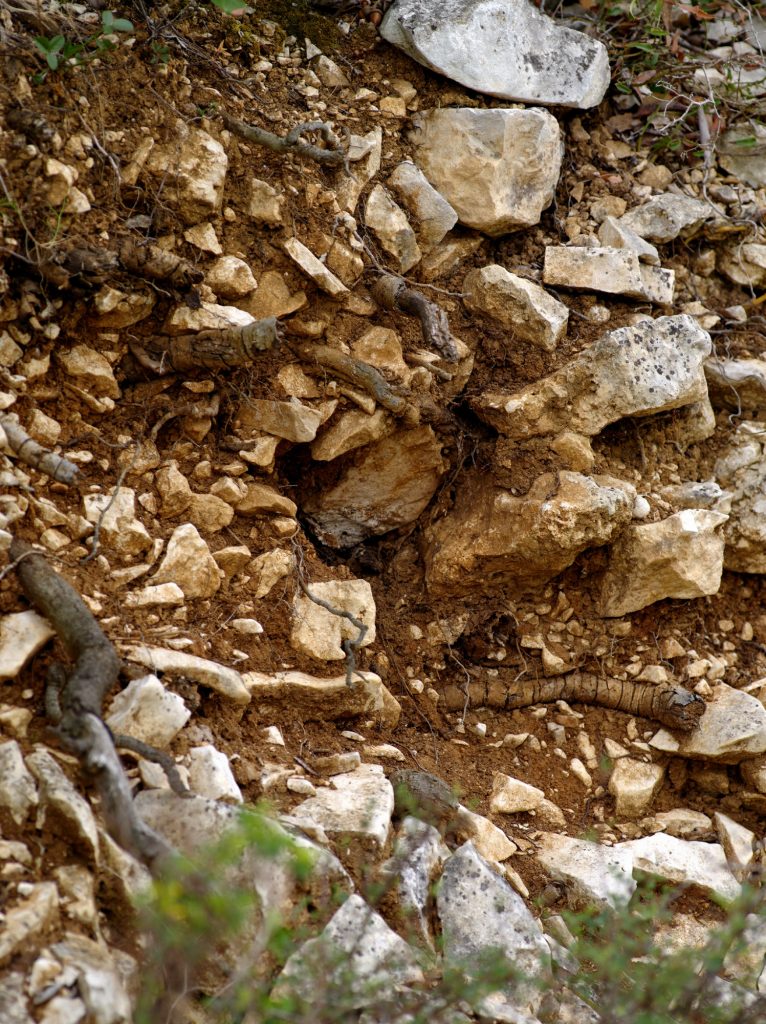
Many different and historic grape varieties, both red and white, have been planted in the vineyard. What was the reason behind this? What are some of the more unusual ones and the particular reason for selecting them?
Indeed, close to 40 grapes varieties (white & red) have been planted and grow in the Gassac valley. There is no other estate in the world that combine such a museum of ancient plants and viticulture.
It was our parents, Aimé & Véronique, who launched themselves into creating such a patchwork of cépages, each with their own vineyard, each protected by the surrounding forest (la garrigue). They initially wanted to preserve and enhance diversity in the vineyard and also bring more complexity to the wines.
Some of these grape varieties came as a result of meeting spectacular vine growers and winemakers, others came from a study of history. The Neherleschol, for example is said to be the grape described in the Bible, where just after crossing the Red Sea, Moses sent scouts ahead to look for the “Promised Land”. The scouts come back with proof of it and two men were required to carry one bunch of grapes – the Neherleschol.
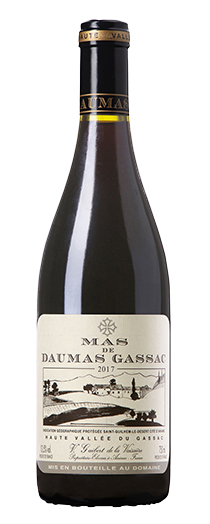
Red: Bastardo de Galice, Souzon de Galice, brancaillo de Galice, Baga du Portugal, Monepluciano d’Italie, Plavac Malic de Croatie, Dolcetto, Barbera & Nebiolo du Piémont ; Voskeat d’Arménie, Saperavie de Géorgie, Vranca de Croatie, St Laurent de Moravie, Arenie Noir d’Arménie, Petit Verdot du Bordelais, Carmenere du Bordelais, Cabernet Sauvignon, Cabernet Franc, Merlot, Malbec, Syrah, Tannat, Pinot & Mourvèdre…
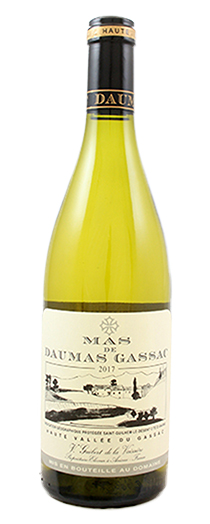
White: Roussanne & Marsanne (Rhone), Petite Arvine du Haut Valais, Petit Courbu du Béarn, Sercial de madère, Smillon de Bordeaux, Armigne du Valais, Arenie Tcherni (Armenie), Khondorni (Armenie) & Tchilar (Armenie), Albarinon de Galice, Zylaska de Georgie, Neherleschol du Haut Plateau du Golan (Israel), Tchakaveri de Georgie, Niolucio du Piemont, Odjaleschi de Georgie, Petit Manseng du Béarn, Viognier du Rhone, Chardonnay de Bourgogne, Chenin de Loire, Muscat d’Alexandrie, Muscat Italien & Semillon.
Would you describe your approach to farming the vines? Has it changed much since the early vintages? Has climate change necessitated different methods? In what way would you say you use organic methods as part of your approach and in what ways does it benefit the vineyards?
The Guibert family inherited a virgin land free of any pesticide or chemical – nothing had ever been sprayed on the Gassac terroir when we started working it – the only fertilizer came straight from the animals and no heavy machinery had ever been used on that soil. My parents made the conscious decision to adopt the same approach, fully respectfully of Mother Nature, when they started the vineyard… No chemicals, no pesticides, use of natural manure, indigenous yeast, and very small machines…. But the most important decision they ever made was not to cut down any trees, thereby preserving the natural habitat and ecosystem. 50 years later we still see the benefit of these decisions they made in 1972, and appreciate the fact that we inherited a virgin land back then. Two thirds of the 63 plots of vines are surrounded by forest; this is proving to be the most impactful decision and a daily blessing. Frost, various disease, floods… through each of the dramatic events we’ve witnessed the positive impact of our having maintained and nurtured nature as an integral part of our vineyards.
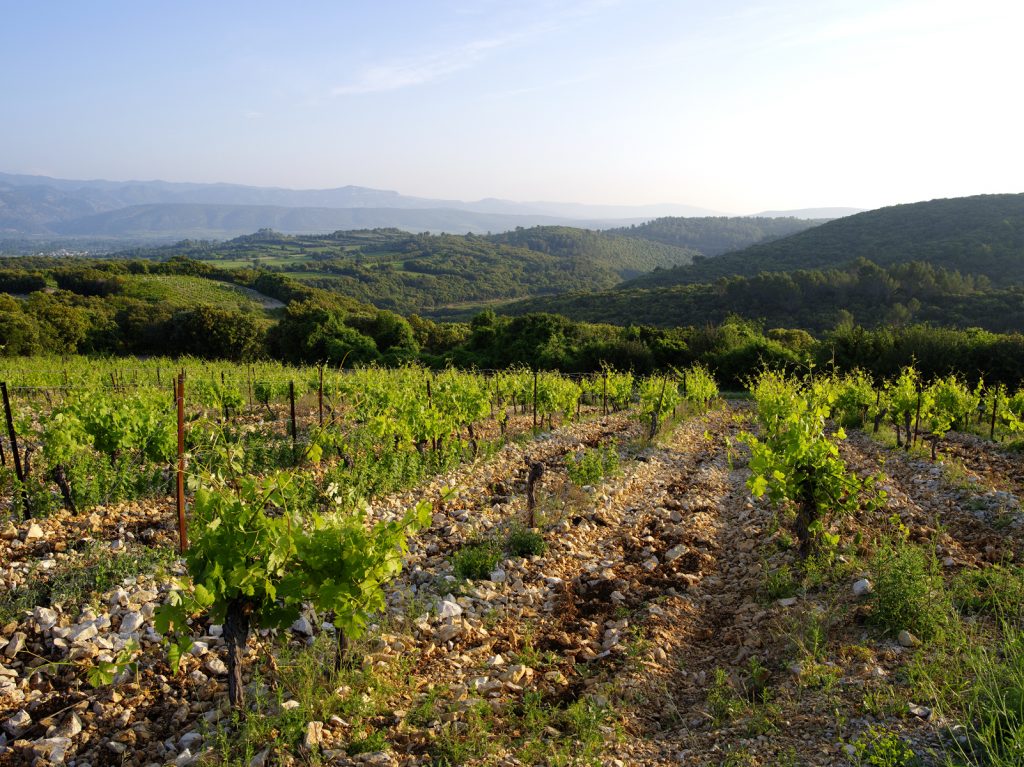
What are your earliest memories of living and working at the estate? When was your first vintage as winemaker?
My earliest memories are from being 6-8 years old and watching the builders, carpenters, plumbers build the underground cellar, as well as “taking part” in the harvest, which basically meant eating as many grapes as I could!
Then, during the harvest period, when I was 14-17, (on weekends only as I had school during the week), I remember spending the long and hot days with a team of thirty people from all over the world, then sharing a glass of wine after work, singing songs, learning the guitar from a Romanian poet… A few years later, when I was 22, when I had six months to spare, my dad gave me a car (a small Peugeot 106, kids) and told me to go visit “cavistes” (wineshop) and restaurants through France to see if we could develop some direct partnerships with the French Trade.
I remember filling the car with samples, setting up appointments from the office then stopping on the side of the road by a phone booth to confirm them, spending 23 weeks in a row visiting every town in Brittany, and in the north-east part of the country.
Then, from a working point of view, I began importing the Gassac wines into New Zealand and Australia whilst I was living there (for 7 years), this being my very first professional long-term interaction with the estate. At the time I was bringing in the Mas de Daumas Gassac red & white as well as the Moulin de Gassac Grenache….by full container loads!
On April 1st 2000, I took a full-time role at Daumas Gassac, initially as “assistant winemaker” alongside my father Aimé Guibert as well as export director…
Twenty-one years later, I’m still at Daumas Gassac and the memory bank has grown tremendously…. Lots of flashbacks to amazing times with my dad and mum, touring the vineyards to see the first buds, the first flowers, the grapes ripening, and, of course, best of all, the time together in the cellar vinifying the wines…
Winemaking – can you give a summary of the approach in the winery in terms of philosophy and practice?
“Finesse, Complexity, Balance” – the holy trinity that has commanded the winemaking philosophy at Daumas Gassac from the very first day.
First and foremost, aiming at a total respect of Mother Nature, we start in the vineyard where everything is done by hand in order to respect and preserve the quality of the fruit. The same philosophy is applied when we receive the fruit in the cellar. Everything is done manually – emptying each of the 16kg boxes and manually sorting every bunch before feeding it by gravity into the tanks. No sulphur dioxide used during the vinification and only indigenous yeasts are allowed in the underground cellar of Daumas Gassac. My winemaking team and I aim to allow the fruit to express itself as naturally as possible– whether that is the terroir or the fruit flavours themselves.
I guess the stage where the human factor plays the greatest role is the choice of the picking date. But with over 40 grapes varieties hand-picked over the course of 3 to 4 weeks, there is always something ripe and ready to be brought in on any given day. Our job is to keep a constant eye on the vineyards, to taste and tour it 2-3 times a week from early/mid-August onwards to make sure we pick according to our philosophy based on “finesse, complexity and balance”. This means ripeness but not over-ripeness. Although the Gassac valley does benefit from a cool micro-climate, we aim at picking with a maximum of acidity. Acidity is one of the key components of the Daumas Gassac wines – we know we’ll have plenty of sugar/alcohol, we know we’ll have lots of flavours, but we do need to have a great level of natural freshness to enliven these wonderful flavours.
Emile Peynaud was somewhat of a mentor. What sort of advice/encouragement did he give?
If Professor Henri Enjalbert might be considered like the “godfather of the Gassac terroir discovery”, then Professor Emile Peynaud is definitely the “godfather behind the Daumas Gassac’s winemaking philosophy”. He was the person to whom my parents turned to in 1976/1977 before the first harvest, he was the mentor from whom they learned everything there is to know about the subtle art of winemaking. Finally, Emile Peynaud was the true friend who never sugar-coated any advice or criticism when it came to the vinification of the Mas de Daumas Gassac Grands Cru wines from 1978 to 2001. Professor Peynaud was behind every step of the first two vintages and he even came to Gassac to help our father with the winemaking. He remained a close friend and counsel all his life – available every day of the year for a phone call with Aimé Guibert to answer his questions and to help crafting the Gassac style.

What prompted the decision to make a white cru wine?
The decision of making a white Mas de Daumas Gassac came in the early 80s when Aimé & Véronique discovered another great terroir just outside the Gassac valley, on the hillsides surrounding it. This vein of white limestone from the Jurassic era led my parents to attempt making a white wine, initially from Petit Manseng and Chardonnay (Viognier & Chenin blanc were added later to the blend, in the mid-90s). Obviously, the cool microclimate that protects the Gassac valley was a big part in that decision as well.
How have the winemaking styles of both red and white Mas de Daumas Gassac evolved since the beginning?
Over the course of 50 years (42 vintages for the red and 36 for the white, to date), the style of a wine will always evolve, whether it is at Daumas Gassac, or elsewhere. The age of the vineyard plays a huge role in that evolution – a 5-to-10-year-old vineyard doesn’t make the same wine as 35 to 50 years old vines, by definition. There is more finesse, more elegance, more subtlety that comes from the fruit of an older plant.
The experience of the winemaking team and the vigneron is another important factor, as we constantly learn from our terroir and our mistakes (planting the right variety on the right soil doesn’t always happen from the very first attempt), our successes, etc…
The time taken to search for better tools, better equipment, better vats, better coopers, etc., also plays a role over time in the evolution of a wine and its style.
Finally, the blend itself can explain an evolution in style – at Daumas Gassac such evolution happened with the white with the introduction of the Viognier in the 90s then the Chenin Blanc in the early 2000s can explain why the wine has evolved towards more finesse and elegance.
The Gassac wines enjoy great reputation in the UK. This country is obviously a very important market to you. Why is it an important market and why (modesty aside!) do you think the wines are so highly-regarded?
Mas de Daumas Gassac initial claim to fame and first accolade outside of France came from the UK. At the time France was hooked on AOC wines and then mostly from Bordeaux and Burgundy. A large % of the French drinking population were convinced about two things: firstly, that good wine could only come from these two classic regions & secondly, that quality wines could only be AOC wines. In the meantime, the UK was considered a historical-cultural country where the real “connoisseurs” existed, people who actually tasted wine to judge if it was good or not rather than basing their decision upon looking at the label.
When the first Daumas Gassac vintages were tasted in the UK, the reaction took the world of wine by surprise… Suddenly, this market of wine experts, with wine connoisseurs like Hugh Johnson, Michael Broadbent and Oz Clarke… started to hail this newcomer from the Languedoc as the “first grand cru wine from the South of France”!!!! Interest from the trade followed, orders started to reach the estate with new clients wanting to import and offer the Daumas Gassac wines to their customers…
In 45 years, there has been not a single country like the UK, where the respect and following for Daumas Gassac has not only has remained extremely strong but has continued to grow over the decades… Furthermore, the UK was an essential market right from the beginning as for a long period (at least until the mid-2000s) that was the market where all the interest, trends and passion around wine started…. If a wine were to become a “cult wine” (like Daumas Gassac) in the UK, then the rest of the world would look at it curiously and follow that interest. Finally, my family’s culture, the fact that we all speak fluent English (as my parents did) and the proximity to the UK meant that we have always spent a great amount of time there, meeting with passionate wine consumers, conducting tastings and wine dinners…. We tend to focus always on what we like the most; England and Gassac was a story of love at first sight and has remained like that since 1978!
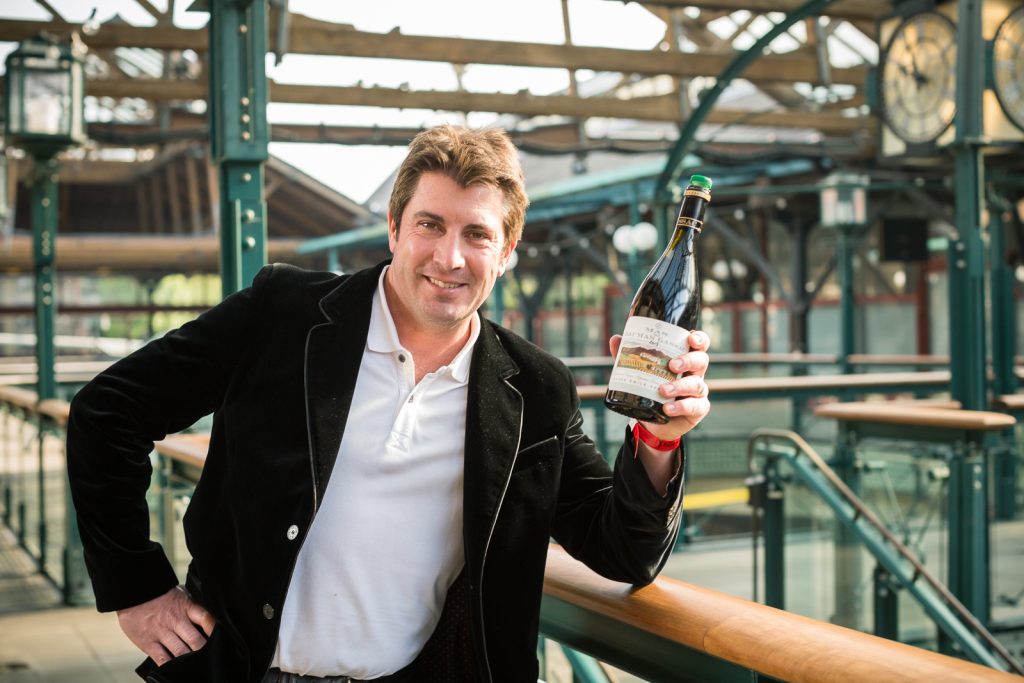
We talk a lot about gastronomic wines and the Gassac wines certainly fit that description. Having travelled to many countries in the world, what are some of the more unusual pairings that you have discovered?
Daumas Gassac is present in over 77 different countries around the world with so many diverse food cultures, meaning fascinating pairings and fun associations.
I remember eating snakes with a Daumas Gassac white 2001, without knowing it was snake at first, and in the end, I thought it was a pretty good pairing!
Another favourite of mine would be a “Roumazava” (with beef and bread mafane), eaten in Madagascar with a Daumas Gassac red 1994, a very unusual pairing and still engraved in my mind.
Having said that, one of the characteristics of the Mas de Daumas Gassac wines (red & white) is that they are first and foremost food wines, and thanks to their very eclectic and versatile blends, they can accompany almost any kind of food – spicy, fruity, fresh, seafood, meat…. One would be very surprised to know how well the Gassac wines combined with almost any ethnic kind of dish!
I am sure that any vigneron loves all his or her wines, but are there any particular vintages that you go back to with especial pleasure? And particular vintages that surprised you in some way?
Indeed, any vigneron loves all his wines like any parents loves all their children…. So, it is an impossible question when asked to pick just one.
Having said that, I can honestly say there are a couple of vintages that have always (without a miss) given me an enormous amount of emotion whenever drunk: the 1988, the 1994 & the 2011…
Surprises usually come from what are qualified as “lesser vintages” such as 1987, 1997, 1999 and 2002 – these are years that in recent times have provoked real enthusiasm, when perhaps less was expected when they were opened!
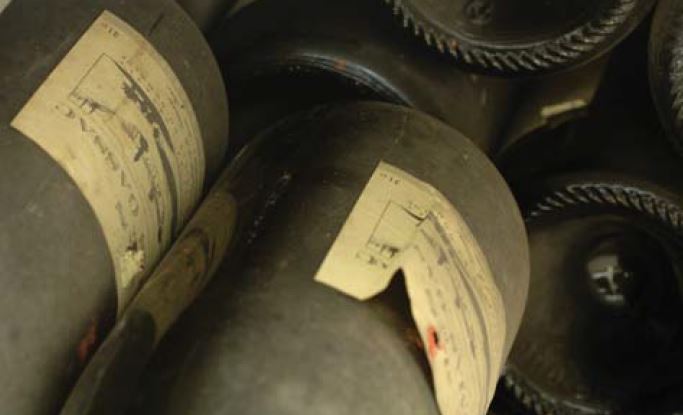
Are there any new projects at Gassac or anything you would like to do in terms of the wines or the vineyards, or are you happy to accept the exciting challenges of each year?
The current “important” project that has been occupying us for the past two and half years is finding the suitable site for a second estate and winery. The Mas de Daumas Gassac estate and vineyard are complete in term of surface area, and while we have been very busy starting replanting (necessary once the vineyard enters fifty years of age), we have also become acquainted with the extraordinary quality of the surrounding terroirs around Aniane, St Jean de Fos, Puéchabon, Montpeyroux… We aim at starting this second estate within a few years and bringing our Gassac philosophy, experience and knowledge to produce something unique that will probably be more typical (than the Daumas Gassac wines) of the region.
The 2nd generation – my brother Gaël, Roman, Basile and myself – has gradually taken over the helm of the estate since 2000.

Our objective has been to make the transition so smooth that no one could say at any given time “this is the year when the Guibert brothers started at Gassac”. We believe we have succeeded and in doing so that we have also earned the opportunity to add our own little stone to the Gassac path… Our search for excellence at all levels is an ongoing mission, always seeking better ways to look after the Mother Nature that nourishes us, so, not only do we not harm it but actually protect it, and so it goes into the hands of our children in a better state than that which we inherited.
At Gassac, the Guibert family still live on the estate – before being a “business”, it is our land, the land where we grew up, where we played in the vineyards, building tree houses in the surrounding woods and swimming in the Gassac stream. Our responsibility is to keep that land virgin, free of any negative impact, so that our children, then their own children and theirs…. can do the same. Our responsibility is not to own the land but protect it – there are ways that we can further this and we keep looking for these ways, replanting trees everywhere we can, subdividing vineyards in order to have small plots (rather than large areas), expanding horse ploughing, increasing the number of beehives around the vineyards, expanding our flock of sheep. It is an endless search – and such an exciting one.
We recently decanted the 2019 Mas de Daumas Gassac Blanc, the full article can be found here.
*
Interested in trying the wines of Daumas Gassac? Contact us directly:
shop@lescaves.co.uk | sales@lescaves.co.uk |
01483 538820
*Note: We are still open for business, doing deliveries, and keen
to help everyone with their booze needs in this difficult time.
Natural wine lovers can visit our online shop and order online!

